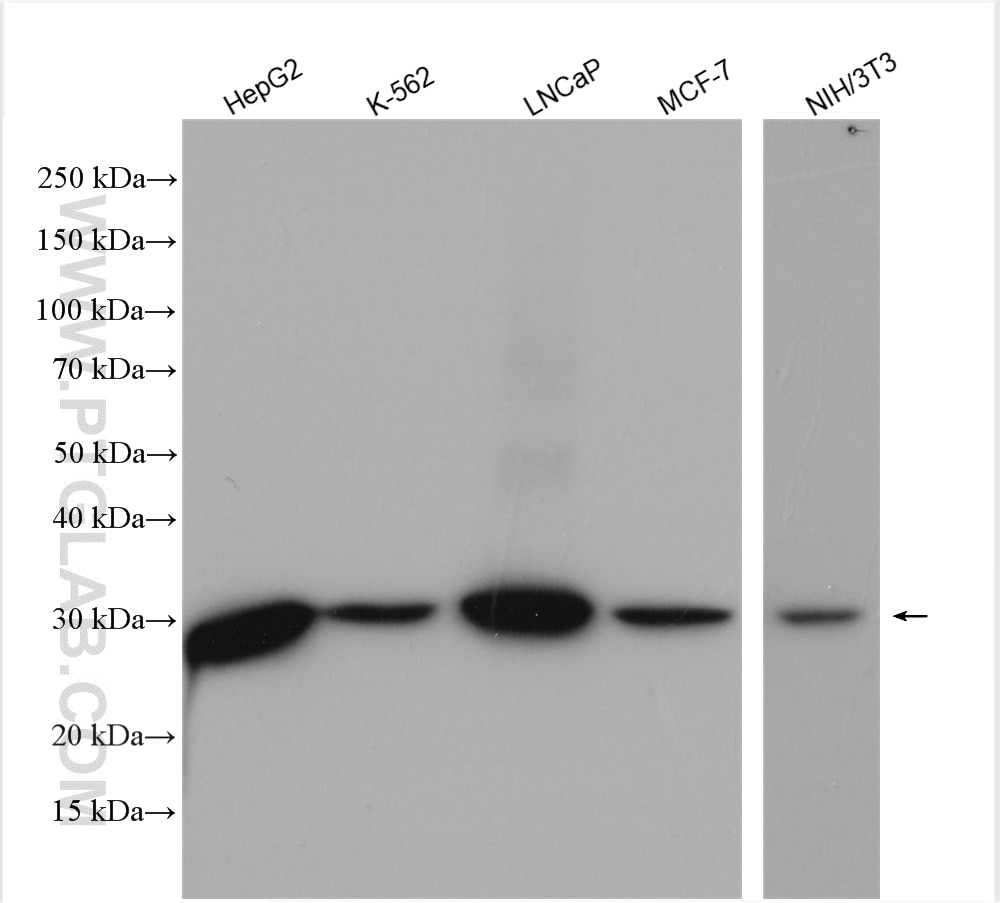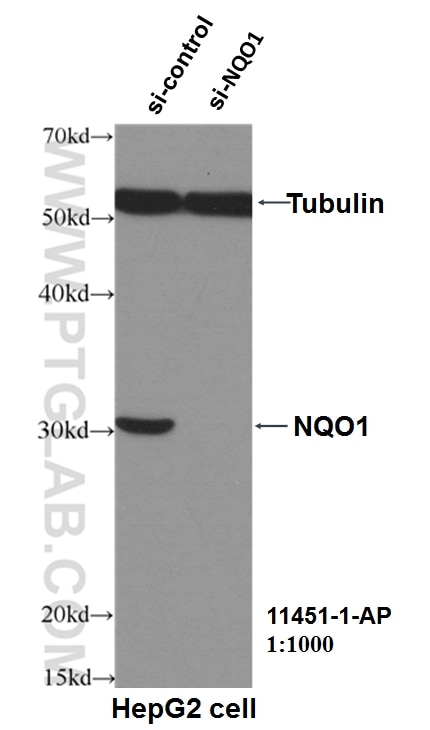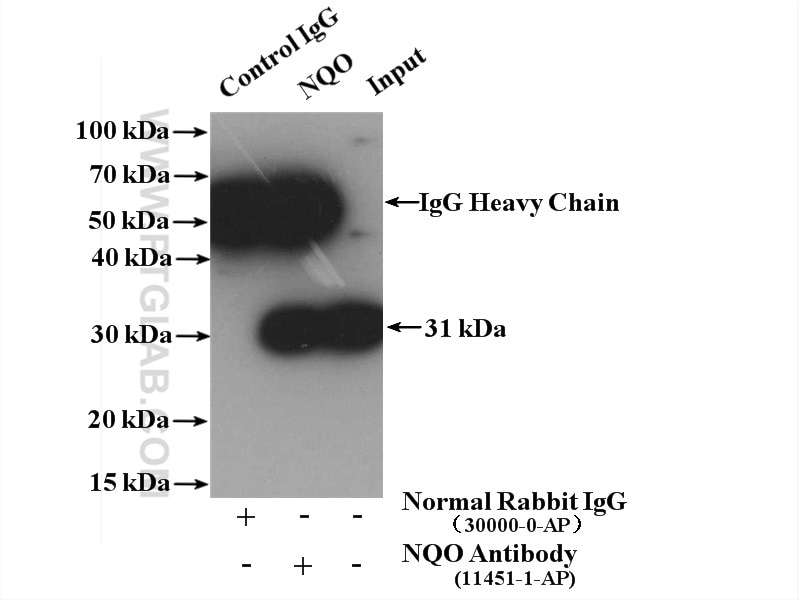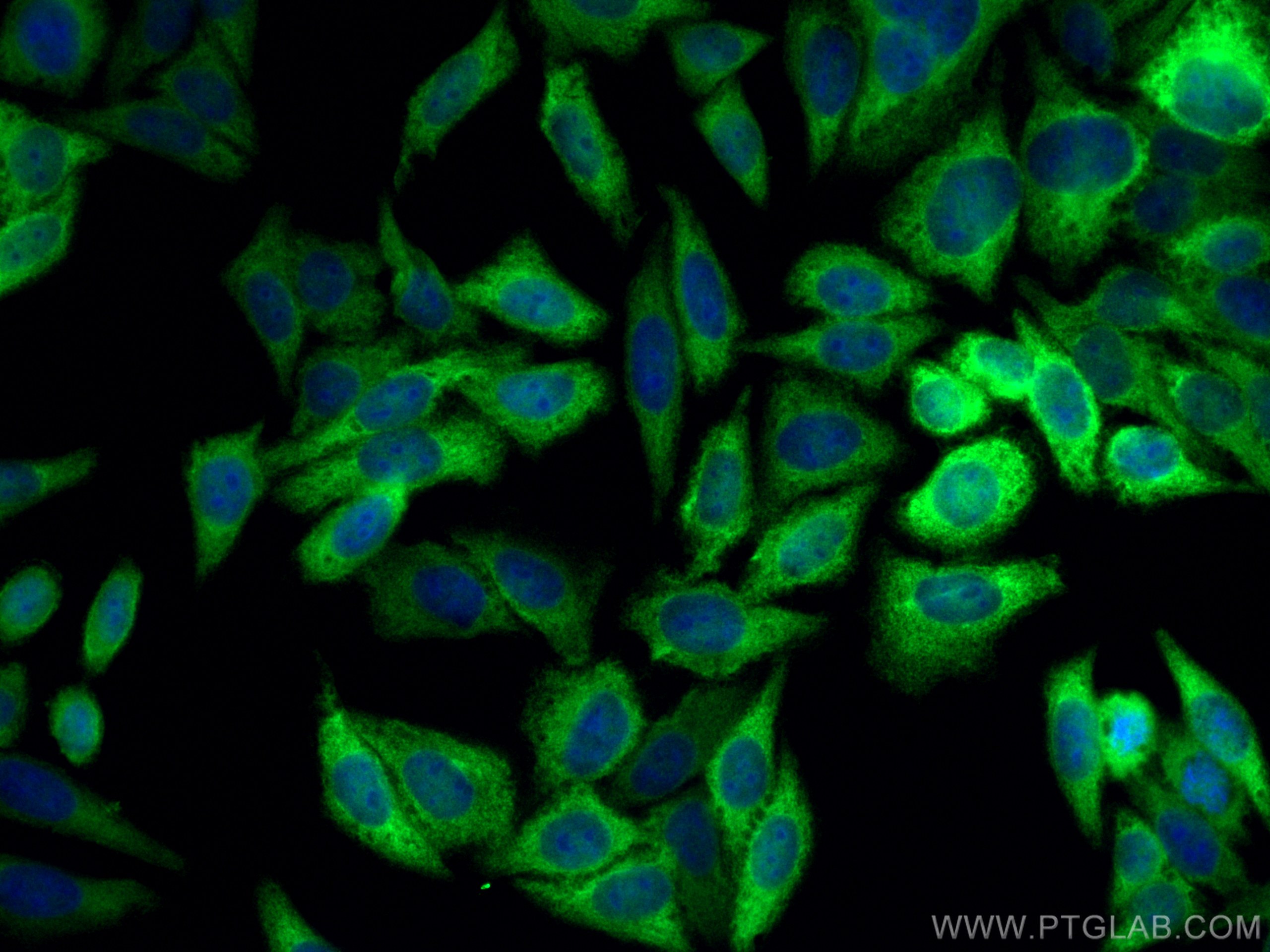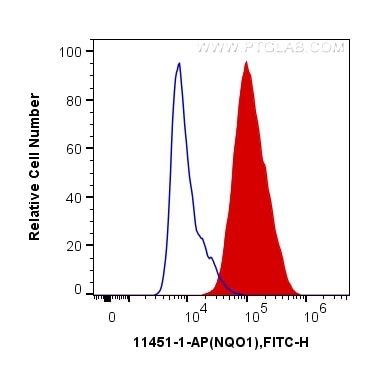Tested Applications
| Positive WB detected in | HepG2 cells, K-562 cells, LNCaP cells, MCF-7 cells |
| Positive IP detected in | HepG2 cells |
| Positive IHC detected in | human colon cancer tissue Note: suggested antigen retrieval with TE buffer pH 9.0; (*) Alternatively, antigen retrieval may be performed with citrate buffer pH 6.0 |
| Positive IF/ICC detected in | HepG2 cells |
| Positive FC (Intra) detected in | MCF-7 cells |
Recommended dilution
| Application | Dilution |
|---|---|
| Western Blot (WB) | WB : 1:1000-1:8000 |
| Immunoprecipitation (IP) | IP : 0.5-4.0 ug for 1.0-3.0 mg of total protein lysate |
| Immunohistochemistry (IHC) | IHC : 1:50-1:500 |
| Immunofluorescence (IF)/ICC | IF/ICC : 1:50-1:500 |
| Flow Cytometry (FC) (INTRA) | FC (INTRA) : 0.20 ug per 10^6 cells in a 100 µl suspension |
| It is recommended that this reagent should be titrated in each testing system to obtain optimal results. | |
| Sample-dependent, Check data in validation data gallery. | |
Published Applications
| KD/KO | See 4 publications below |
| WB | See 405 publications below |
| IHC | See 29 publications below |
| IF | See 13 publications below |
| IP | See 1 publications below |
Product Information
11451-1-AP targets NQO1 in WB, IHC, IF/ICC, FC (Intra), IP, ELISA applications and shows reactivity with human samples.
| Tested Reactivity | human |
| Cited Reactivity | human, pig, rabbit, canine, chicken, bovine, sheep, goat |
| Host / Isotype | Rabbit / IgG |
| Class | Polyclonal |
| Type | Antibody |
| Immunogen |
CatNo: Ag2009 Product name: Recombinant human NQO1 protein Source: e coli.-derived, PKG Tag: GST Domain: 1-274 aa of BC007659 Sequence: MVGRRALIVLAHSERTSFNYAMKEAAAAALKKKGWEVVESDLYAMNFNPIISRKDITGKLKDPANFQYPAESVLAYKEGHLSPDIVAEQKKLEAADLVIFQFPLQWFGVPAILKGWFERVFIGEFAYTYAAMYDKGPFRSKKAVLSITTGGSGSMYSLQGIHGDMNVILWPIQSGILHFCGFQVLEPQLTYSIGHTPADARIQILEGWKKRLENIWDETPLYFAPSSLFDLNFQAGFLMKKEVQDEEKNKKFGLSVGHHLGKSIPTDNQIKARK Predict reactive species |
| Full Name | NAD(P)H dehydrogenase, quinone 1 |
| Calculated Molecular Weight | 274 aa, 31 kDa |
| Observed Molecular Weight | 31 kDa |
| GenBank Accession Number | BC007659 |
| Gene Symbol | NQO1 |
| Gene ID (NCBI) | 1728 |
| RRID | AB_2298729 |
| Conjugate | Unconjugated |
| Form | Liquid |
| Purification Method | Antigen affinity purification |
| UNIPROT ID | P15559 |
| Storage Buffer | PBS with 0.02% sodium azide and 50% glycerol, pH 7.3. |
| Storage Conditions | Store at -20°C. Stable for one year after shipment. Aliquoting is unnecessary for -20oC storage. 20ul sizes contain 0.1% BSA. |
Background Information
NQO1, also named as DIA4, NMOR1, DTD and QR1, belongs to the NAD(P)H dehydrogenase (quinone) family. This enzyme apparently serves as a quinone reductase in connection with conjugation reactions of hydroquinons involved in detoxification pathways as well as in biosynthetic processes such as the vitamin K-dependent gamma-carboxylation of glutamate residues in prothrombin synthesis. It is known to be involved in benzene metabolism. In human studies of ozone exposure, polymorphisms in oxidative stress genes (NQO1, GSTM1, GSTP1) modify respiratory symptoms, lung function, biomarkers and risk of asthma. (PMID:18511640; 18848868 ) This antibody recognizes all the three isoforms (26-27 kDa and 31 kDa) of NQO1 and the homo-dimer form (66-70 kDa) of NQO1.
Protocols
| Product Specific Protocols | |
|---|---|
| IF protocol for NQO1 antibody 11451-1-AP | Download protocol |
| IHC protocol for NQO1 antibody 11451-1-AP | Download protocol |
| IP protocol for NQO1 antibody 11451-1-AP | Download protocol |
| WB protocol for NQO1 antibody 11451-1-AP | Download protocol |
| Standard Protocols | |
|---|---|
| Click here to view our Standard Protocols |
Publications
| Species | Application | Title |
|---|---|---|
Nature The CoQ oxidoreductase FSP1 acts parallel to GPX4 to inhibit ferroptosis.
| ||
Bioact Mater A two-pronged approach to inhibit ferroptosis of MSCs caused by the iron overload in postmenopausal osteoporosis and promote osseointegration of titanium implant | ||
Sci Transl Med Activation of NRF2 ameliorates oxidative stress and cystogenesis in autosomal dominant polycystic kidney disease. | ||
Nat Commun Microglia clear neuron-released α-synuclein via selective autophagy and prevent neurodegeneration. | ||
Nat Commun Cordycepin prevents radiation ulcer by inhibiting cell senescence via NRF2 and AMPK in rodents. |

